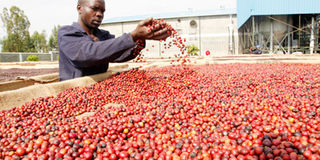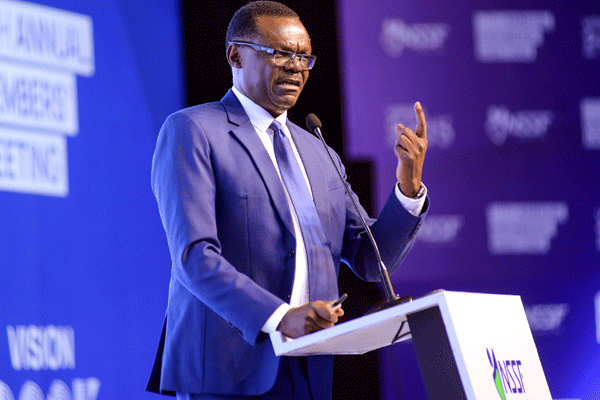Prime
Uganda’s current account deficit widens by Shs780b, BoU says

Less exports. A dealer sorts out coffee recently. Coffee is one of the raw materials that Uganda exports. PHOTO BY RACHEL MABALA
What you need to know:
Challenge. In the last three months, Uganda has faced the problem of outflow currency on the importation of goods and services.
Review: During the period under the review, BoU says private sector imports increased by $74.7m on account of both oil and non-oil imports, while government imports increased by $12.5m through projects.
Kampala. Uganda’s current deficit has widened by $216.2m (about Shs780b) due to increased imports of goods and services.
This means that the country in the last three months has been faced with the problem of outflow currency (US dollar) on the importation of goods and services.
Current deficit is a situation where the value of the goods and services of a country imports exceeds the value of goods and services it exports.
In its highlight in the Monetary Policy report of December 2017, the Central Bank said the Current Account Deficit (CAD) deteriorated from $303.9m (about Shs196.471 trillion) to $520.1m (about Shs187.652 trillion) during the Quarter-October 2017, largely driven by developments in the goods account.
Speaking on Monday in Kampala, the executive director of research Bank of Uganda (BoU), Dr Adam Mugume, said: “The current deficit worsened in the quarter that in October 2017 due to increased imports of goods and services.”
The Central Bank say developments in the external sector resulted in an overall balance of payments deficit of $21.4m during the three months ended October 2017, leading to a net draw-down in reserves of $23.2m.
BoU says the outlook of Uganda’s Balance of Payment (BOP) in the short term; current account deficit is likely to worsen driven by a rise in the import bill associated with the festive season.
“However, this could be moderated by increased personal transfers. In the medium term, the current account balance is likely to widen further as the import bill rises largely on account of the continued pickup,” BoU said.
During the period under the review, BoU says private sector imports increased by $74.7m on account of both oil and non-oil imports, while government imports increased by $12.5m through projects. Mr Mugume said the risks associated with high current deficit is local currency depreciation (Uganda Shilling depreciation against the US dollar), rise in inflation rate.
In the export front, the Central Bank says export receipts decreased from $863.6 million to $793.1m in the Quarter-October 2017, lower non-coffee exports.
On Monday, BoU maintained its policy rate Central Bank Rate (CBR) at 9.5 per cent citing recovery in the economy especially in agricultural sector, low inflation rate, stable foreign exchange market, pick up in private sector credit growth and reduction in lending rate.
The band on the CBR was maintained at plus/negative 3 percentage points and the margin on the rediscount rate at 4 percentage points on the CBR.
Consequently, the rediscount rate and the bank rate remained at 13.5 per cent and 14.5 per cent respectively.
The Deputy Governor BoU, Dr Louis Kasekende, in current monetary policy statement, said there are risks facing Uganda’s economy from the domestic and international environment.
He said: “The near-term inflation outlook remains subdued but core inflation is projected to pick-up in FY 2018/19 to around 5 per cent as spare capacity in the economy is reduced.
Nonetheless, there are upside risks to this outlook, including the future direction of the food crops prices and the path of the exchange rate, with the latter contingent on the external economic environment.”




